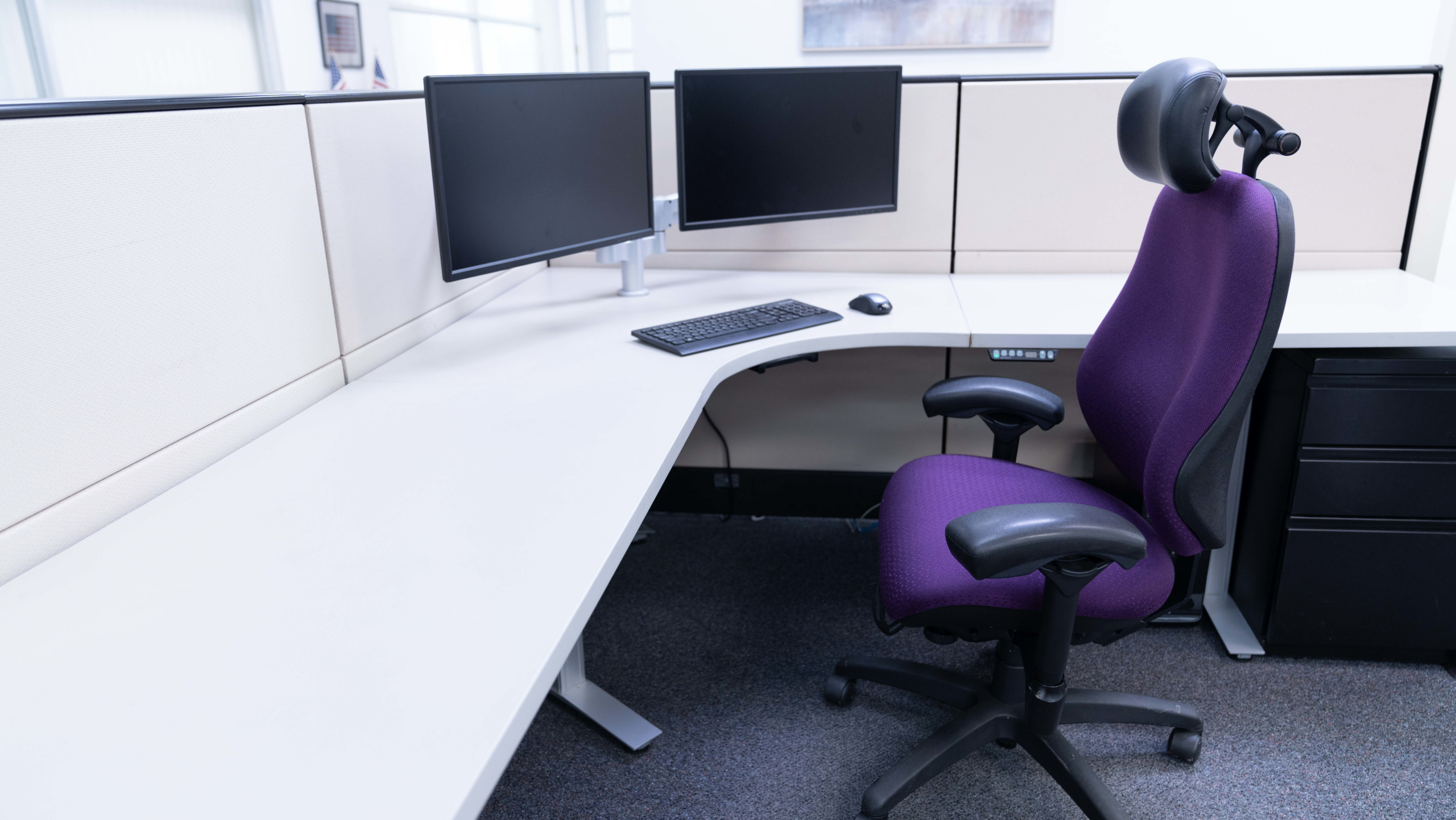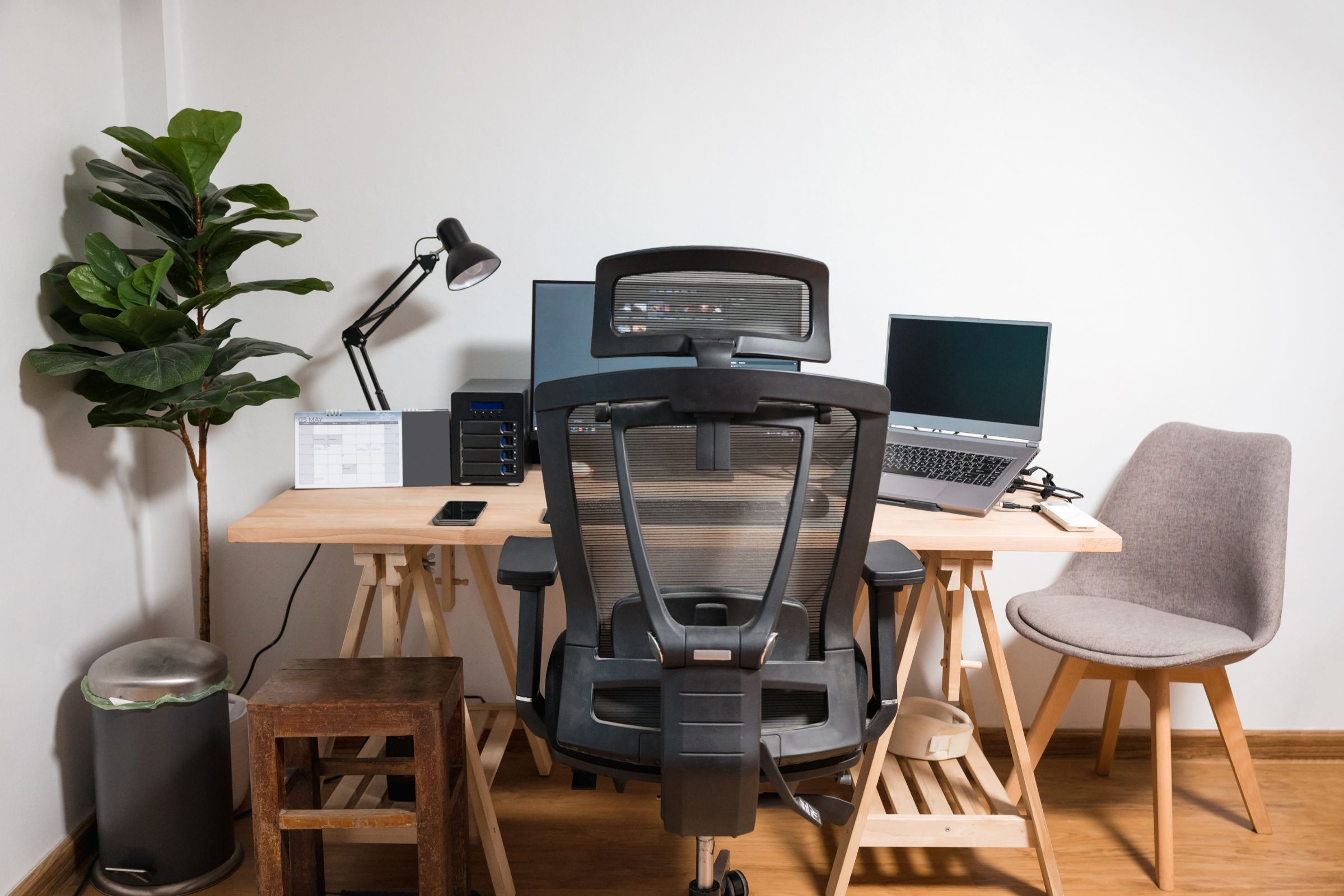Choosing the right seating solution is crucial for a comfortable and productive workspace. An ergonomic…

What Is the Ideal Height for an Office Chair?
In the United States, the standard height for a desk is 29”. However, there is not a standard height for office chairs. So, we get lots of questions from people about the ideal height for ergonomic chairs, particularly tall ergonomic office chairs. The reason that question is difficult to answer is that the height of your desk chair depends on how tall you are. In fact, it is not just a question of height, but also of how your body is structured. Taking those factors into account to find ergonomic furniture, you can find the right size office seating for you.
General Seat Height
Most ergonomic office chairs are adjustable for height. They have pneumatic levers that let you lower and raise the seat. A good seat height range is 16” to 21” from the floor. That will allow the user to put their feet flat on the floor, have their thighs horizontal, and place their arms at the same height as the desk.
Of course, if you are an outlier in terms of height, either shorter or taller than average, then you may need a different seat, such as big and tall office chairs. You do not want to have your feet dangling and you do not want to be scrunched down into your seat. However, you need to fit your desk, not just your chair. So, keep in mind that you may need to adjust the height of your desk for you. In some instances, that can be as simple as cutting down the legs on your desk or adding risers to the bottom feet of your desk.
Chair Size
While seat height is important, it is not the only critical size feature. How big is your butt? It may seem like a personal question, but the size of your butt can help determine the ideal width for your bariatric office chair. If you have a smaller backside and short legs, then you may have to sit forward in chairs with deeper seats. On the other hand, if you have a larger backside and large legs, then you may be dangling off the end of the chair. The correct seat height will let you place your back against the backrest, and leave 2” to 4” between the seat and the back of your knees.
Lumbar Support
Another feature to consider for office seating is lumbar support. The lumbar or lower back region needs support. The lower spine curves inward. Slouching flattens out this curve. That can lead to pain and discomfort over the long term. Getting a chair with adjustable lumbar support lets you create a chair that fits the curve of your spine.
Adjustable Size Is Important
People come in a wide range of sizes. So should office chairs. A chair that is perfect for a person with one body type can be uncomfortable and harm the health of another person. In fact, few people are actually built for non-adjustable chairs. That is why adjustability is so important. It allows you to customize a chair for your needs without having to buy a fully customized chair.
Understanding the ideal height for ergonomic office chairs is essential for delivering maximum comfort and support during long working hours. Ergonomic chairs cater to various body types, including those requiring a tall ergonomic office chair or big and tall office chairs.
Ergonomic Chairs: A Blend of Comfort and Adjustability
Ergonomic office chairs are designed to support the spine’s natural curvature, reducing stress on the back and neck. The height of an ergonomic chair should permit your feet to rest flat on the floor and your knees to sit at a 90-degree angle. This position ensures proper blood flow and reduces the strain on your lower back.
Why Choose Ergonomic Office Furniture for Your Office?
Ergonomic furniture, including ergonomic office furniture and bariatric office chairs, is tailored to provide enhanced support and comfort. These chairs are adjustable to fit various body types and work environments, making them superior to traditional office chairs.
FAQs:
How long should you sit in an ergonomic chair?
Standing or taking brief walks every 30 minutes is recommended, even in ergonomic chairs. Even with the best ergonomic support, prolonged sitting can lead to stiffness and circulation issues.
How to maintain an ergonomic office chair?
Regularly check and tighten bolts and screws. Clean the chair per manufacturer guidelines and adjust the settings periodically to ensure optimal support and comfort.
Which is better: an ergonomic office chair or a gaming chair?
Ergonomic office chairs are generally better for long-term work as they are explicitly designed for extended sitting with optimal support for the back and posture. Gaming chairs, while comfortable, may offer a different level of ergonomic support for work-related tasks.



